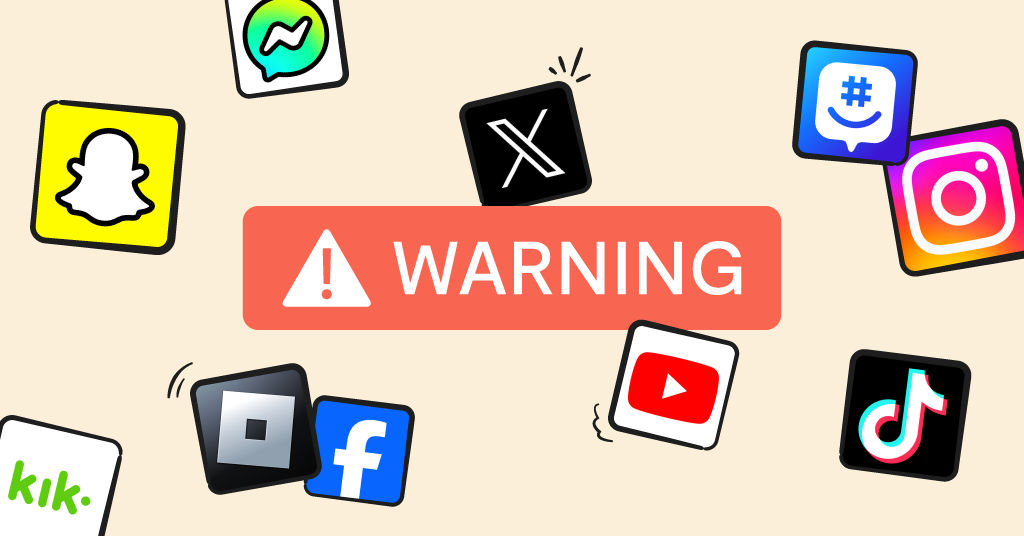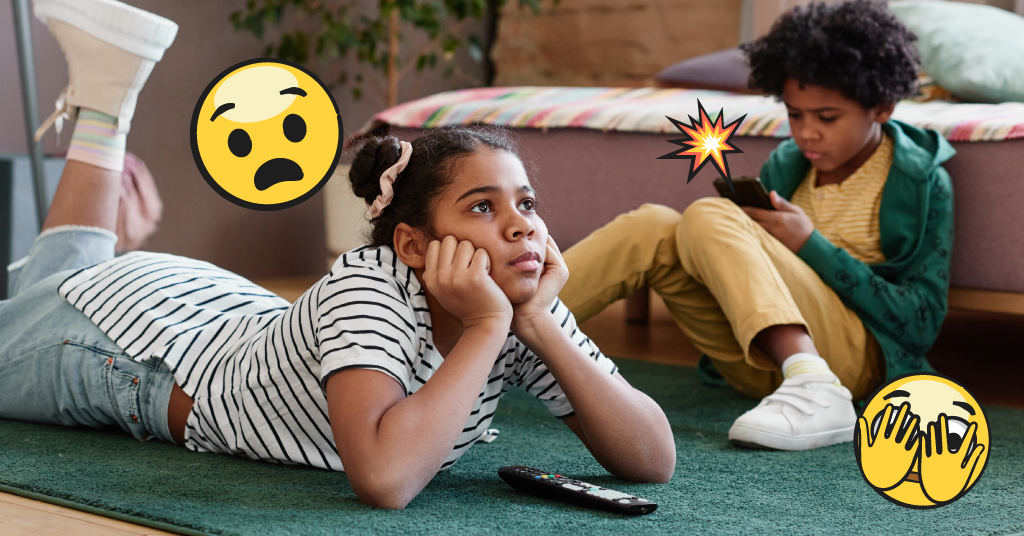**This blog post was updated on August 8, 2024.**
Key takeaways from this blog post:
- The Surgeon General's op-ed highlights concerns about the impact of social media on youth mental health.
- It emphasizes the need for increased regulation and transparency from tech companies to protect children.
- The op-ed calls for better research into social media’s effects and for more resources to support mental health.
- Parents are encouraged to monitor and manage their children’s social media use to mitigate potential harms.
- Advocating for policy changes and greater oversight can help address the challenges posed by digital platforms.
I’m writing today because Vivek Murthy, the U.S. surgeon general and our nation’s top doctor, recently published an op-ed to advocate for official warning labels on social media platforms. This is a powerful development, and honestly, I’m glad he’s finally starting to put more and more pressure on social media companies to help protect families.
You may remember that last year Dr. Murthy issued an official advisory in conjunction with the Department of Health and Human Services concerning the state of youth mental health and its relationship with social media. (Spoiler alert: It’s not great).
This week, he wrote a more personal, emotional, and aspirational piece that hopefully parents across the country will read and respond to. What’s happening right now with our kids isn’t going to go away or get better on its own — we have to do something about phones and social media. Here are the parts of Murthy’s op-ed that resonated the most with me, and I hope they speak to you, as well.
10 Takeaways for Parents from the Surgeon General’s Recent Op-Ed
1. The issue of screen time and kids has reached a boiling point.
Something feels different right now, and lots of parents I’ve talked to across the country are feeling it, too. Battles over screen time and social media are reaching new heights, and kids on average are spending hours a day on devices, with the average being 4.8. Last year, Dr. Murthy’s advisory on the state of mental health of teens showcased how social media is an incredibly damaging factor that is changing how kids are growing up and experiencing the world. Youth anxiety and depression are compounding at rates previously unseen, and we’re all unprepared for its after-effects. Something has to give.
2. A warning label could change how parents approach screen time for their kid.
Remember in the ‘80s and ‘90s when albums started having parental advisory warnings on the cover? This would be similar. Of course, it’s not going to prevent parents from allowing their kids to have phones or Instagram, of course, but it may make them stop for a second and think about all of the dangers. It could also spur them to look a little harder at parental control options for the device or app, which is super important. Technology isn’t going anywhere, and like any other tool, it needs guardrails for its youngest users.
3. Legislation needs to be passed to protect kids online.
I’m pretty sure we can all agree that kids deserve more protection online from the powerful algorithms that expose them to sexual content, drugs/alcohol, predators, disordered-eating, misleading ads, and more. The most popular apps also act essentially like gambling centers, keeping kids glued to their phones with infinite scrolls, autoplay, and the dopamine hits of constant notifications.
The companies themselves have no motivation to do this themselves, considering that they’re only beholden to their shareholders. Because of this, the only way we may be able to convince them to have a conscience is through the passing of laws. And even then, they won’t do it because they want to — they’ll do it because they have to. (I’ll take what I can get, though).
4. Tech and social media companies have to be held accountable.
These companies must know that this level of technology isn’t purely innocent when it comes to affecting kids. Granted, there hasn’t been time to study all of the long-term effects of social media exposure on kids — or adults, for that matter — but we deserve all of the information they currently possess on the matter.
And if there’s no studies currently underway, they need to commission some. They certainly have the funds (Instagram alone makes billions in profit every year). As Murthy states in his piece, “While the platforms claim they are making their products safer, Americans need more than words. We need proof.”
Right now, big tech and social media companies are inching by with the bare minimum of family-focused protections. For example, Snapchat and TikTok have so-called “Family Centers” that allow parents and kids to join their accounts for increased supervision. But kids can turn these off at any point without approval, rendering them essentially useless.
5. Screen time needs to be limited everywhere — not just at home.
Murthy makes the point that warning labels won’t be enough to help change behavior, and he’s right. But it could be part of a broader movement to think more mindfully about technology and safety. Kids need boundaries and rules not just at bedtime and during family gatherings, but also where the spend the majority of their days — at school. Teachers across the country can attest to the distracting influence of phones during lessons, as well as the negative social effects of social media, cyberbullying, and pornography consumption on campus and on school-issued devices.
6. Parents need all the help they can get.
Right now parents and children are trying to figure everything out on their own, and they’re pitted against some of the best product engineers and most well-resourced companies in the world. Technology is constantly changing and new apps are continually being launched to vie for children’s attention — it’s no wonder parents are exhausted trying to keep their kids safe.
Ask any pediatrician what takes up around 30% of their day, and they’ll tell you it’s mental health issues being caused by excessive screen time. Now is the time for society as a whole to work together to better support families and the best place I’ve seen for that so far is Parenting in a Tech World.
7. Kids recognize that there needs to be more balance, too.
Murthy shares that kids often express feeling bad after using social media, with one child saying, “I just don’t feel good when I use it.” They notice how too much screen time can make them anxious, distracted, and even affect their schoolwork. It’s clear that kids are becoming more aware of these issues and are looking for ways to spend more time offline and enjoy other activities. Take, for example, the rising trends of young people asking for flip phones so they’re not even tempted with all the apps and social media smartphones provide.
Our lives with smartphones and social media are so new and so uncertain — we’re all learning as we go. Perhaps kids born between 1999 and 2024 will bear the brunt of our collective ignorance with regards to the real damage these new technologies cause. Hopefully, we can start course-correcting so future generations can learn from our trial and error. Our kids — and their kids — deserve this.
8. Other public health crises led to reform — digital technology should be no different.
Consumer products often appear on the scene years before we learn about their eventual harmful effects. Think lead paint, smoking, car seat belts, and other things that we learned were important public health concerns to address. Social media and technology are everywhere today, and this wasn’t the case 20 years ago. Because of this quick adoption, we need to be equally quick in warning people about their inherent dangers.
9. The moral test of a society is how it protects its most vulnerable — children.
If I’m being honest, social media is damaging the mental health of adults, too. But we’ve learned skills and abilities to help us deal with stressors in our life. Kids don’t have these same powers, and they’re incredibly vulnerable. To watch social media companies take advantage of their youth, their naivete, and their desire to emulate the adults they see online — it’s heartbreaking. It’s infuriating. It’s unconscionable.
10. We can no longer afford to wait and see what will happen to this generation.
The time for debating and waiting to see is over. It’s become clear time and time again that the insatiable greed of these companies can only be satisfied by having kids start using their platforms earlier and earlier, and then more and more every day. It’s time we start putting guardrails to give kids a chance to grow up healthy and just be kids. It won’t be just one thing that changes everything — it will take all of us together to help give kids back their childhood. And we can do it. But we can no longer be passive.
Want to Start Taking a Stronger Stance on Your Kid’s Online Safety? Do These Things
Staying actively involved in your child’s online world is a non-negotiable for parents today. Here are just a few things that you can do today to take control of your child’s online safety.
- Join half a million other digital parents in Parenting in a Tech World, a Facebook group for families to ask questions, share advice, and support each other.
- Read The Anxious Generation, Jonathan Haidt’s revolutionary new book that details how phone-based childhoods are affecting young people’s mental health.
- Sign up for our free Overwhelmed to Empowered newsletter and get parenting tech tips straight to your box.
If you’re interested in parental controls, you can also start a free, 7-day trial of Bark to see how it can help your family.
Read more
Bark helps families manage and protect their children’s digital lives.






